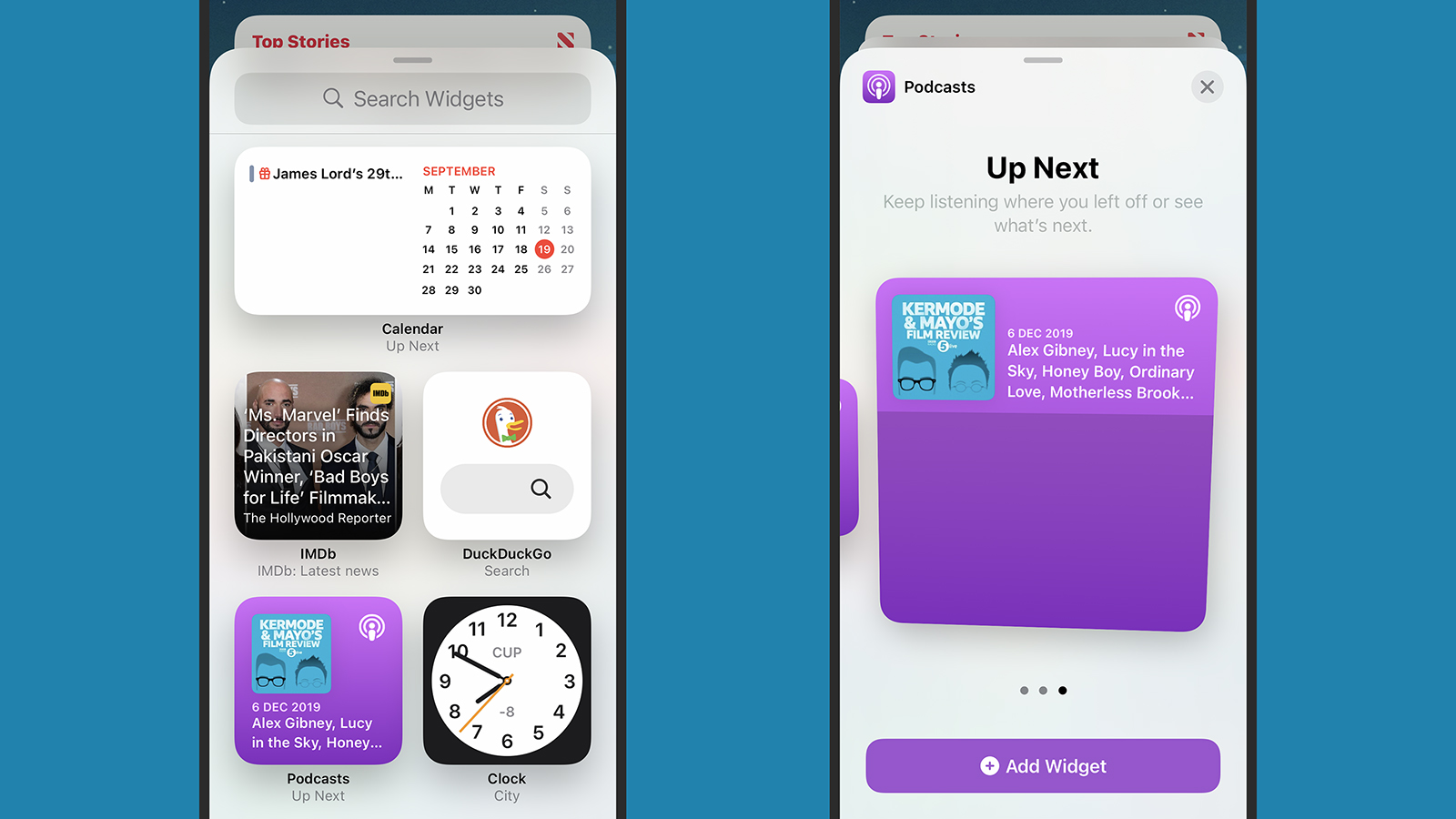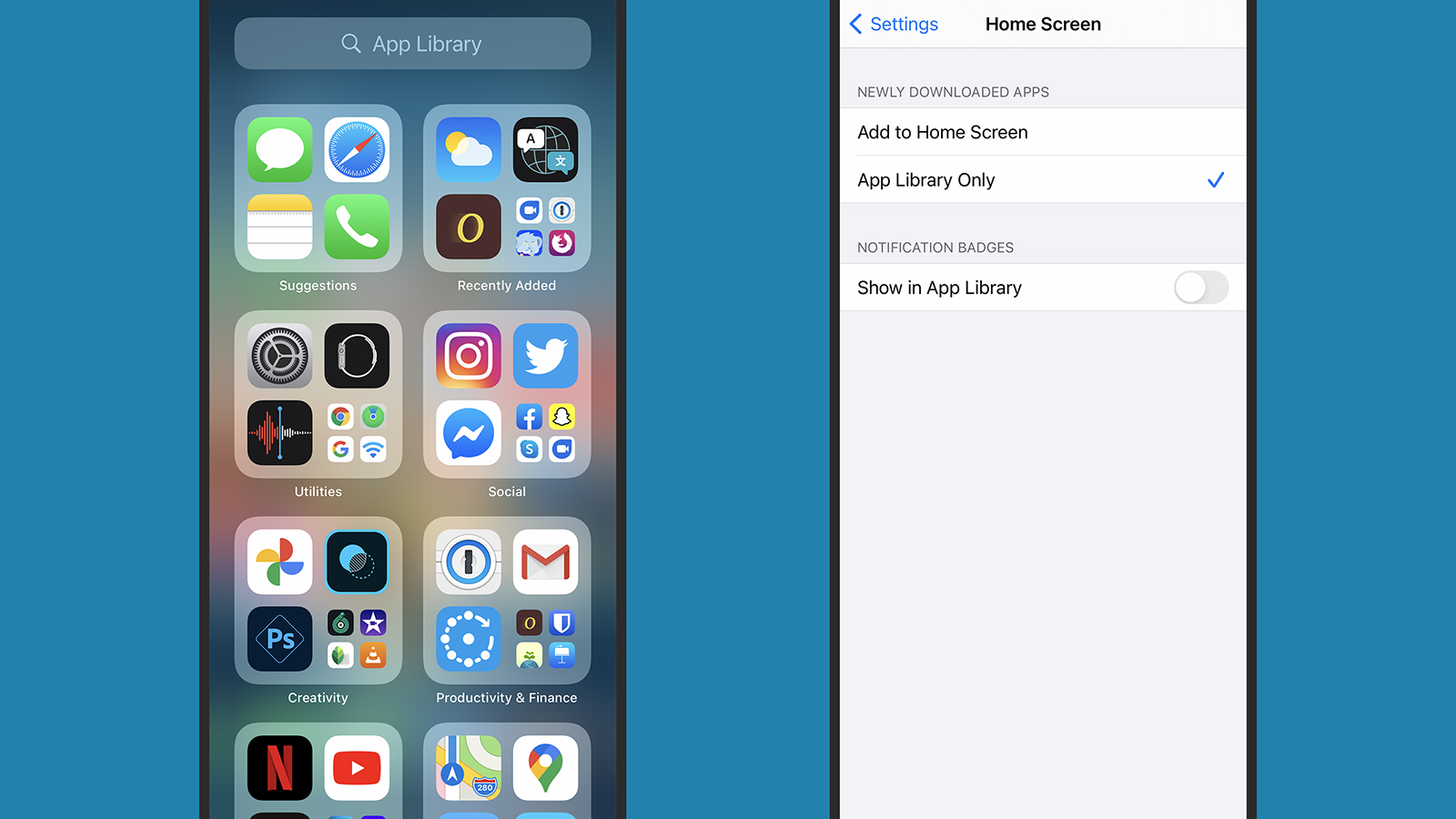For a long time, one of the key benefits of choosing Android over iOS has been the ability to break away from the rigid inflexibility of multiple home screens, split up into uniform grids of app icons. Now with the introduction of home screen widgets and the App Library in iOS 14, that advantage has disappeared. Here’s how the new features work.
You can add a widget to your refreshed iOS 14 home screen by long pressing on any blank area and then tapping the + button up in the top left hand corner. You’ll see that a lot of the widgets are currently made by Apple, but third-party developers are catching up fast — the widgets in the list reflect the apps you’ve got installed on your phone (to install a widget, you need to install the relevant app).
Tap on a widget you like the look of to add it. In some cases you’ll get a choice of sizes to pick from — swipe left and right to pick. You can’t change the size of the widget once it’s on the home screen, as you can on Android, so you have to make your choice here. When you’ve picked a size, tap and hold and drag the widget into place, or just tap Add Widget.
There’s another option for adding widgets, which is drag them straight from their old spot on the Today view (to the left of your home screens). The widgets and the icons already on the home screen will shift around to make space for the new widget, and you might need to do some tapping and dragging while you’re still in editing mode to get everything looking the way you want it to.

As with app icons, you can tap and hold on top of widgets to remove them, or to go back into editing mode (Edit Home Screen). Some widgets will also show an Edit Widget option on this pop-up menu: It lets you change various settings for the widget, such as the time zone shown in the Clock widget, or the folder shown in the Notes widget.
The Smart Stack widget up at the top of the widget list is also worth considering. It rotates through the widgets available on your phone that are “most relevant” based on the time of day — we’re not sure exactly what that means, but one example Apple gives is that you’d see a maps widget with your commute time in the evening.
You can also create stacks of widgets yourself — these only take up one block of space on the home screen, but you can swipe up or down to cycle between them all. Just drag one widget on top of another widget of the same size to create a stack. To change the order of the widgets, long press on a stack and choose Edit Stack; from here you can also turn on Smart Rotate, which we assume applies the same algorithmic approach as Apple’s own Smart Stack.

You can create stacks of widgets from the same app if you want to, after customising them to show different items. For example, the Shortcuts widget lets you choose which folders of Siri shortcuts are shown — you could create four widgets showing four different folders, then pile them on top of each other and swipe between them as needed.
Also new in iOS 14 is the App Library (it’s basically an app drawer, Android users). Now newly installed apps don’t necessarily have to have their own icon on the home screen; they can be hidden away in the App Library in case you ever need them (go to Settings then Home Screen to choose whether new apps automatically get an icon on the home screen or not).
All your apps are always available in the App Library; having them on a home screen is optional. If there’s an app on an existing home screen that you want to have in the App Library and nowhere else, tap and hold on it, then choose Remove App — as well as the usual option of uninstalling the app, there’s now a new option to Move to App Library instead.

Entire home screens can be hidden from view, too. To hide a home screen, tap and hold on a blank area of the home screen until the icons start shaking, then tap the dots just above the dock at the bottom — you’ll then be able to remove the ticks from any home screens you don’t want to be visible.
The change goes a long way to helping you keep iOS tidier: It’s now possible to hide all but one home screen, with your favourite apps on it, so you’re no longer searching through page after page of apps to find it. You can search for apps from the App Library or by tapping and swiping down slightly on any home screen.
For the time being at least, the App Library doesn’t give you much in the way of customisation. You can’t choose the categories that Apple picks — with labels like Creativity, Social, and Entertainment — and you can’t choose which apps go where. Apps can be launched as normal from the App Library, and you can still long press on apps to bring up the quick launch menu (or to uninstall the app).
One final option, via Home Screen in Settings, lets you choose whether or not notification badges are shown in the App Library — if you find this too distracting, you can turn them off. While we’d like to see more in the way of manual editing in the App Library, it’s going to make a big difference for those who have a lot of apps and don’t want to painstakingly create and maintain folders to organise them.
